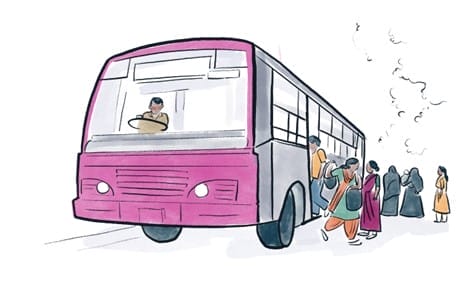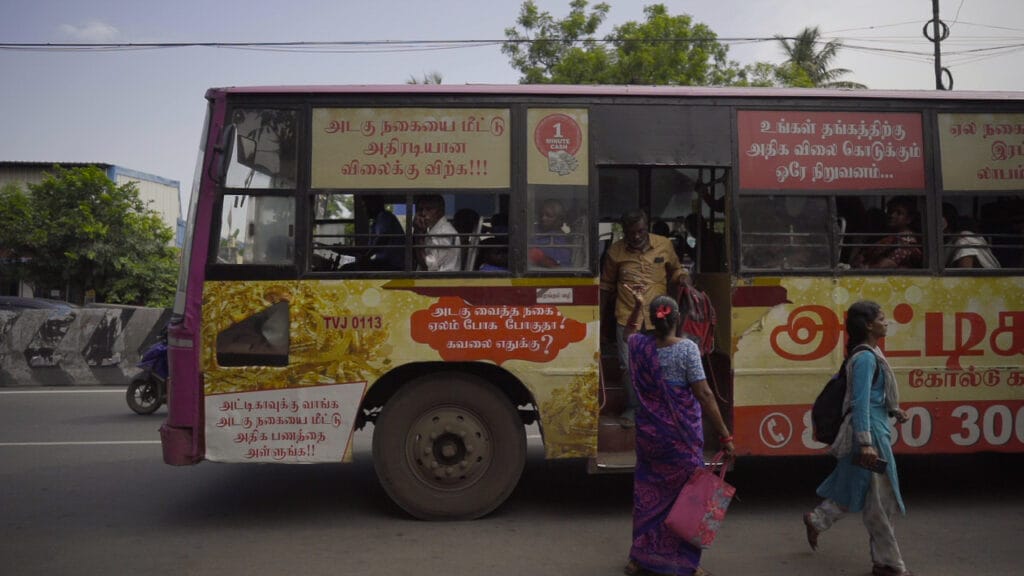The recent spurt of States announcing free public bus travel for women has led to much commentary on women freeloading off the hardworking men; of women roaming the streets with no purpose; of greater financial burden on transport undertakings who are already in the red; and of course, a general sense of this being unfair — why do only women get to travel free?
To analyse these claims and assess the benefits and drawbacks of the fare-free bus scheme for women, Citizen consumer and civic Action Group (CAG) surveyed 3,000 women across six cities in Tamil Nadu, two years after the scheme started. The report, Fair Fares: Towards Gender-Inclusive Public Transport, was released on February 20th, 2024.
Who pays?
The transport undertaking, such as the Metropolitan Transport Corporation (MTC) in Chennai, is reimbursed by the state government at the rate of Rs 16 for every zero-value ticket issued. So, for the transport undertaking, revenue is not affected. According to Dr Alby John, Managing Director of MTC, who spoke at the release of the report, revenue for MTC has gone up after the government introduced the scheme.
It could be said that looking at the larger picture, the government is paying for the tickets from the public exchequer, which is essentially taxpayer money. So, tax-paying citizens are paying for women to travel free. Yes, but women are also taxpayers — they pay taxes on their income if they work outside the home and every time they make purchases. And, as more women join the workforce (in part thanks to the scheme), they will also be contributing to taxes and economic growth.
The narrative of women freeloading never considers that all forms of transport, be it public or private, are subsidised. No public transport system in the world is profitable and definitely does not make much money from farebox revenue. The cost-benefit analysis, then, must be looked at within a larger picture.
Public transport already has several fare concessions for different groups recognising them as special, vulnerable groups such as people with disabilities, the elderly and students. Finally, women have been subsidising the ‘hard-working, tax-paying’ male passengers for years.
Read more: What Chennai women have to say about the Kalaignar Magalir Urimai Thogai scheme
Complex travel patterns

How? Research has shown that women travel differently from men. Men typically make single journeys to and from work while women tend to make multiple short trips as they juggle childcare, domestic responsibilities and professional roles. Public transport systems follow a system of having more buses/trains during ‘peak’ hours, which is when the men commute to work and lowering frequency in ‘off-peak’ hours.
Women who have more complex travel patterns that don’t fit the 9 to 5 routine, pay for this in time wasted. Most public transport in India charges less (per kilometre) for longer journeys. Women who take multiple short trips pay more for the same distance than men who take a single journey.
Private transport i.e. our cars and two-wheelers are subsidised by taxpayer money in terms of the infrastructure provided — roads, flyovers, free roadside parking. All of these resources are used by a minority of the population but paid for by all of us.
Why do women take the bus?
The study by CAG found that women welcomed the scheme as it saved them money (on average Rs 800 per month) and considering that over 90% of the women surveyed come from households earning less than Rs 20,000/month, this is a substantial saving. In addition, this saving allows them some wiggle room in their household budget.

For many women, the bus is the ticket to financial freedom. Women told us that it allowed them to access jobs, which were further away and paid better. In the past, distance and cost of transport were used as a reason for their families to restrict their job hunting.
For those women, who are not working outside the home, the free bus scheme allowed them to avail of the facility, where earlier they might have walked for up to 3 km to save on transport costs. It also allowed other women to have their caregiver (often also a woman) accompany them when accessing healthcare.
Who reaps the benefits of the scheme?
A key question was — what did the women do with the money saved? The women reported that the money was invested in their family’s nutrition, health and education. The returns on this investment will benefit not just the family but the nation as well, as their children are healthier (reducing the healthcare burden on the State) and access better employment opportunities thereby contributing further to the economy.
Read more: Prejudice and stereotypes make house-renting a pain for single women in Bengaluru
Women will loiter!

We asked the women if accessing leisure activities (parks, malls, places of worship, beaches, etc) had increased since the scheme. The answer was an emphatic yes. Leisure was not a priority earlier, as it would mean an additional cost/burden on the family purse. With the fare-free scheme, this was no longer a consideration and so family trips have increased in frequency.
Indulging in leisure activities is crucial for the mental health and happiness of all and while men have taken their access and use of public spaces for granted, the constraints on women are many. The scheme has eased one constraint — transport. Suppose the scheme has led to increased visibility of women in public spaces. In that case, it will lead to a greater sense of safety for women in these spaces and therefore, encourage more women to step out and thus promote greater social inclusivity.
Shifts in mobility
CAG found that many women have shifted from using personal vehicles (two-wheelers) and autos to using the bus. This shift to more sustainable transport is to be welcomed. Similar results were reported by the Gender Lab of the Greater Chennai Corporation (GCC); the scheme had led to families switching to the bus since it was free for little children and women and so the only cost was for the men of the family.
Ticking off several boxes
The Tamil Nadu government in its transport policy note states that the scheme seeks to improve the social inclusion of women. The scheme has certainly promoted that. In addition, there are potentially other benefits that need to be studied and quantified — a shift towards sustainable mobility; change in air quality and traffic congestion; safety of women in public spaces; and better nutritional, health, and educational outcomes for families.
In a utopian city, public transport would be free — for everyone. This would, over time, encourage people to eschew personal transport and switch to public transport. Of course, just removing the fares will not do the trick. Public transport must meet service benchmarks in frequency, comfort, safety, and ease of use/access. In addition, a narrative that makes public transport ‘cool’ and aspirational has to be built.
Government needs to be congratulated for offering the scheme exclusively to women who have asserted that savings out of this goes to benefit their family in one way or other. Had it been to their male counterparts, the money saved would again go to the government and ruin the family more.
The free bus scheme empowers women by easing financial strain, expanding access to work, education, and healthcare, and boosting independence. It’s a small change with a big impact on equality and mobility.